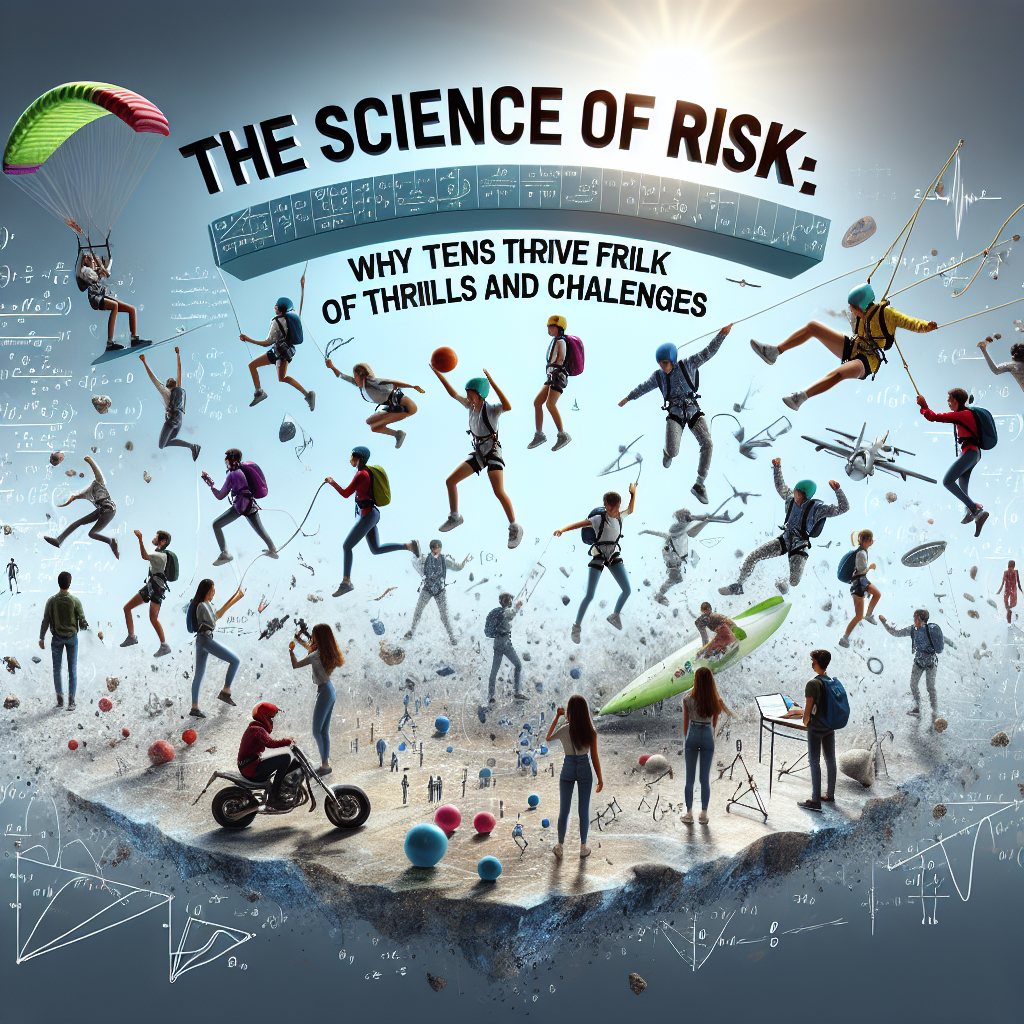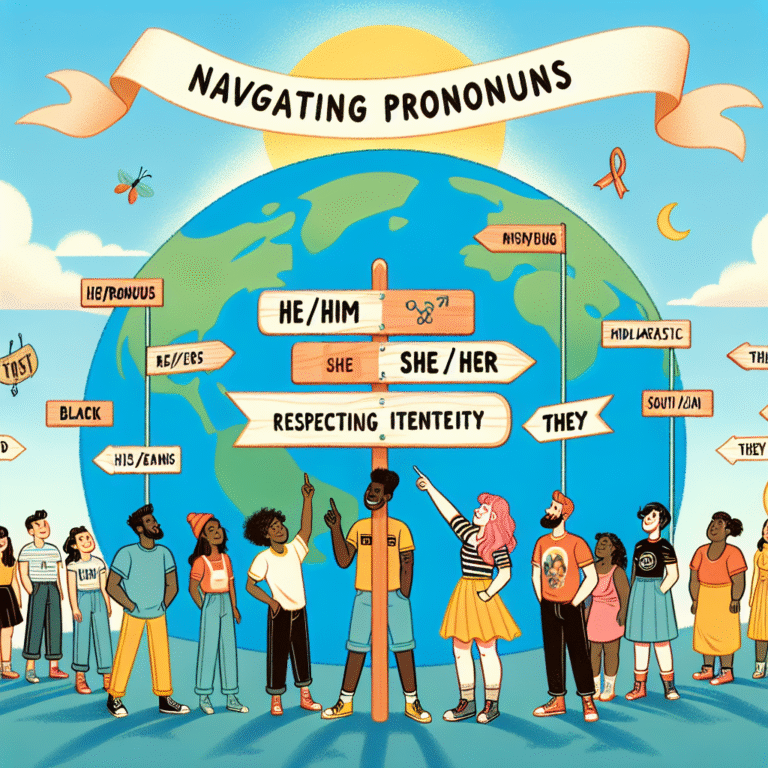
Introduction
Imagine a world where every jump off a cliff, every skydive, and every late-night adventure feels exhilarating. For many teenagers, this world isn’t just a fantasy—it’s a reality that beckons them into the throes of risk. But what compels teens to seek out such thrilling escapades? The answer lies in The Science of Risk: Why Teens Thrive on Thrills and Challenges. Understanding the underlying factors not only sheds light on adolescent behavior but also opens doors for deeper discussions on mental health, safety, and personal growth.
As we embark on this fascinating journey into the psychological, biological, and social dimensions of risk-taking in teens, we’ll explore compelling case studies and scientific research that reveal why this behavior is not merely reckless but can also serve as a catalyst for development and resilience.
The Biological Imperative: Hormones and Brain Development
The Teenage Brain: A Work in Progress
Adolescence is characterized by dramatic changes in hormone levels and brain structure. Teen brains are in a critical period of development, which means that they are not just receptive to new experiences but also wired to seek them out.
Research from neuroscientists indicates that the prefrontal cortex, responsible for decision-making and impulse control, is still maturing during the teenage years. This cerebral immaturity often leads to higher levels of thrill-seeking behavior. In contrast, the limbic system, which governs emotional responses and pleasure from rewards, is fully operational. This imbalance can propel teens into actions that make adults cringe—like jumping off high places or experimenting with substances.
Case Study: The Adventure of the "Thrill-seeking" Teen
In a study published in the Journal of Adolescent Health, researchers followed a group of teenagers who frequently engaged in extreme sports. They found that the thrill-seekers reported higher levels of endorphins and dopamine after these activities, linking their experiences directly to mood elevation and a sense of fulfillment. This reinforces the idea that risk-taking can create positive emotional states, motivating teenagers to repeat such behaviors.
Table 1: Hormonal Changes and Their Impact on Risk-taking
| Hormone | Function | Effect on Behavior |
|---|---|---|
| Testosterone | Increases aggression | Drives competitive behavior |
| Estrogen | Regulates mood | Can influence decision-making |
| Cortisol | Stress response | May push teens to seek comfort in risky activities |
Psychological Factors: The Quest for Identity
Risk-Taking as a Tool for Exploration
During the teenage years, individuals are often trying to carve out their identities. The Science of Risk: Why Teens Thrive on Thrills and Challenges takes on new meaning as teens explore different facets of their personalities. Engaging in risky behavior becomes not just an adrenaline rush, but a pathway to self-discovery and independence.
Case Study: Adolescents in High-Stakes Environments
In another insightful research study, teens who participated in high-stakes activities—such as rock climbing and skateboarding—reported a greater sense of accomplishment and self-efficacy. Moreover, these teens were more likely to engage in constructive risk-taking, applying the confidence they gained in these physical challenges to academic and social settings.
Psychological Game Changers: Peer Influence
Peer influence also plays a pivotal role in the decision-making processes of adolescents. According to a study by the American Psychological Association, friends can significantly amplify thrill-seeking behavior, making participation in risky activities more appealing. Engaging with peers allows for shared experiences, reinforcing the social component of risk-taking.
Table 2: Psychological Drivers of Risk-Taking
| Factor | Description | Impact |
|---|---|---|
| Identity Exploration | Searching for self-definition | Can lead to both positive and negative choices |
| Peer Pressure | Influence from friends | Increases likelihood of engaging in risky behavior |
| Autonomy | Desire for independence | Encourages risk-taking as a form of self-expression |
The Social Dimension: Finding Community and Connection
Thrill-Seeking and Social Bonds
Risk-taking isn’t done in isolation; it’s often a communal experience that strengthens social bonds. In The Science of Risk: Why Teens Thrive on Thrills and Challenges, we find that social interactions during risk-laden activities provide essential emotional support. This aspect can lead to tighter friendships and a stronger sense of belonging.
Case Study: Skateboarding Culture
Take the world of skateboarding, for instance. In communities where skateboarding is prevalent, teens often band together to push each other’s limits. Research from the Journal of Youth Studies highlighted how skateboarding fosters a sense of community, where friendships are built not only on shared risks but also on mutual support. Participants noted feeling more resilient against life’s challenges when they had their skate crew beside them.
The Double-Edged Sword of Social Media
While social media often amplifies pressure to engage in risky behaviors for validation, it can also serve as a platform for connection. Recording and sharing experiences can reinforce community bonds, which in turn can positively influence teens to undertake new challenges.
Table 3: Social Influences on Risk-Taking
| Factor | Influence | Outcome |
|---|---|---|
| Community | Shared activities | Strengthens friendships |
| Social Media | Validation through likes/shares | Can promote both positive and negative behaviors |
| Mentorship | Role models | Guides constructive risk-taking |
Navigating Risks Responsibly: The Balance of Thrills and Safety
The Role of Education and Guidance
Equipping teens with the right tools to navigate risks responsibly is crucial. Programs designed to foster decision-making skills can lighten the allure of dangerous behavior while still encouraging adventure. Discussions about safe boundaries, consequences, and the importance of mental health can provide a sound framework for thrill-seeking experiences.
Case Study: Adventure-Based Therapy
Adventure-based therapy programs have garnered attention for their effectiveness in promoting safe thrill-seeking. In these programs, teens engage in activities like hiking and rock climbing while also undergoing group counseling sessions. In a pilot study published in The Journal of Experiential Education, participants showed improvements in both self-esteem and decision-making skills, demonstrating that risk can be harnessed positively.
The Importance of Parental Involvement
Parents should aim to foster open discussions about risk and thrill-seeking. According to a study in Developmental Psychology, teens whose parents encourage safe exploration are more likely to engage in positive risk-taking rather than dangerous behaviors.
Table 4: Strategies for Responsible Risk-Taking
| Strategy | Description | Benefit |
|---|---|---|
| Open Communication | Discuss risks openly | Builds trust and understanding |
| Setting Boundaries | Create clear guidelines | Encourages safe exploration |
| Support Programs | Enroll in adventure therapy | Promotes growth in a safe environment |
Conclusion
Through the lens of The Science of Risk: Why Teens Thrive on Thrills and Challenges, it’s evident that risk-taking is a multidimensional phenomenon involving biological, psychological, and social factors. While this quest for thrills can sometimes veer into dangerous territory, it can also be a powerful vehicle for personal growth, resilience, and connection.
By better understanding the motivations behind thrill-seeking behaviors, we empower ourselves and our teens to make informed decisions that promote health and well-being. So, let’s encourage our adolescents not just to chase thrills but to embark on their journeys with awareness and support—ultimately transforming risky ventures into profound life experiences.
FAQs
1. Why do teenagers crave risk-taking?
Teenagers seek risk to navigate identity, explore boundaries, and connect socially, often driven by hormonal changes and brain development.
2. How can parents guide their teens in risk-taking activities?
Parents can promote healthy risk-taking by fostering open discussions, setting clear boundaries, and being involved in activities together.
3. What are safe ways for teens to experience thrills?
Teens can opt for organized sports, adventure-based therapy, or supervised extracurricular activities that balance excitement with safety.
4. Is risk-taking linked to mental health?
Yes, engaging in healthy risk-taking can build resilience and boost self-esteem, while also offering an outlet for stress relief.
5. How does peer pressure affect teen risk-taking?
Peer pressure can intensify the desire to engage in risky behaviors but can also foster positive experiences if directed toward constructive challenges.
By embracing The Science of Risk: Why Teens Thrive on Thrills and Challenges, we can enrich adolescent experiences and foster environments that promote safe exploration and vibrant growth.


















